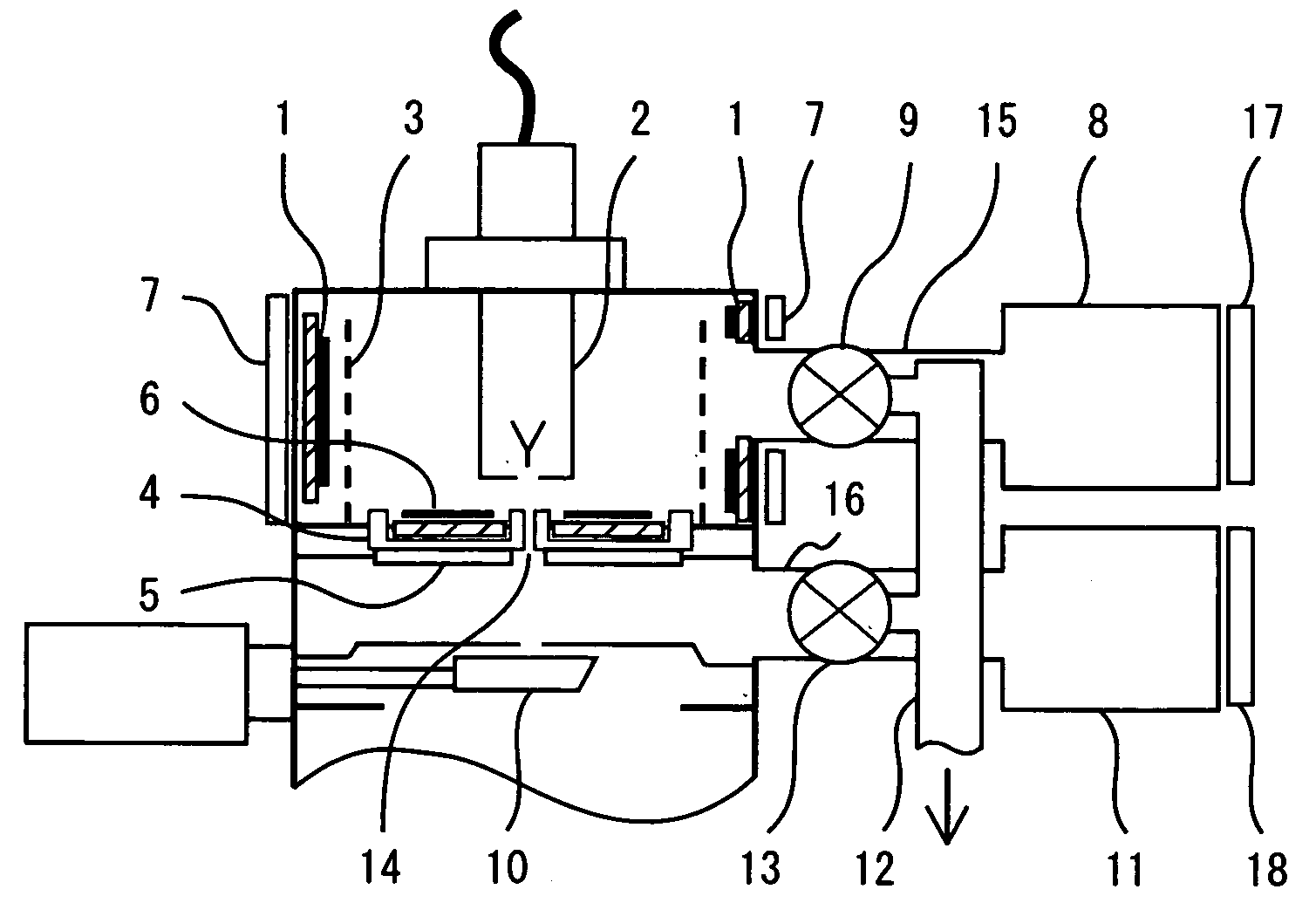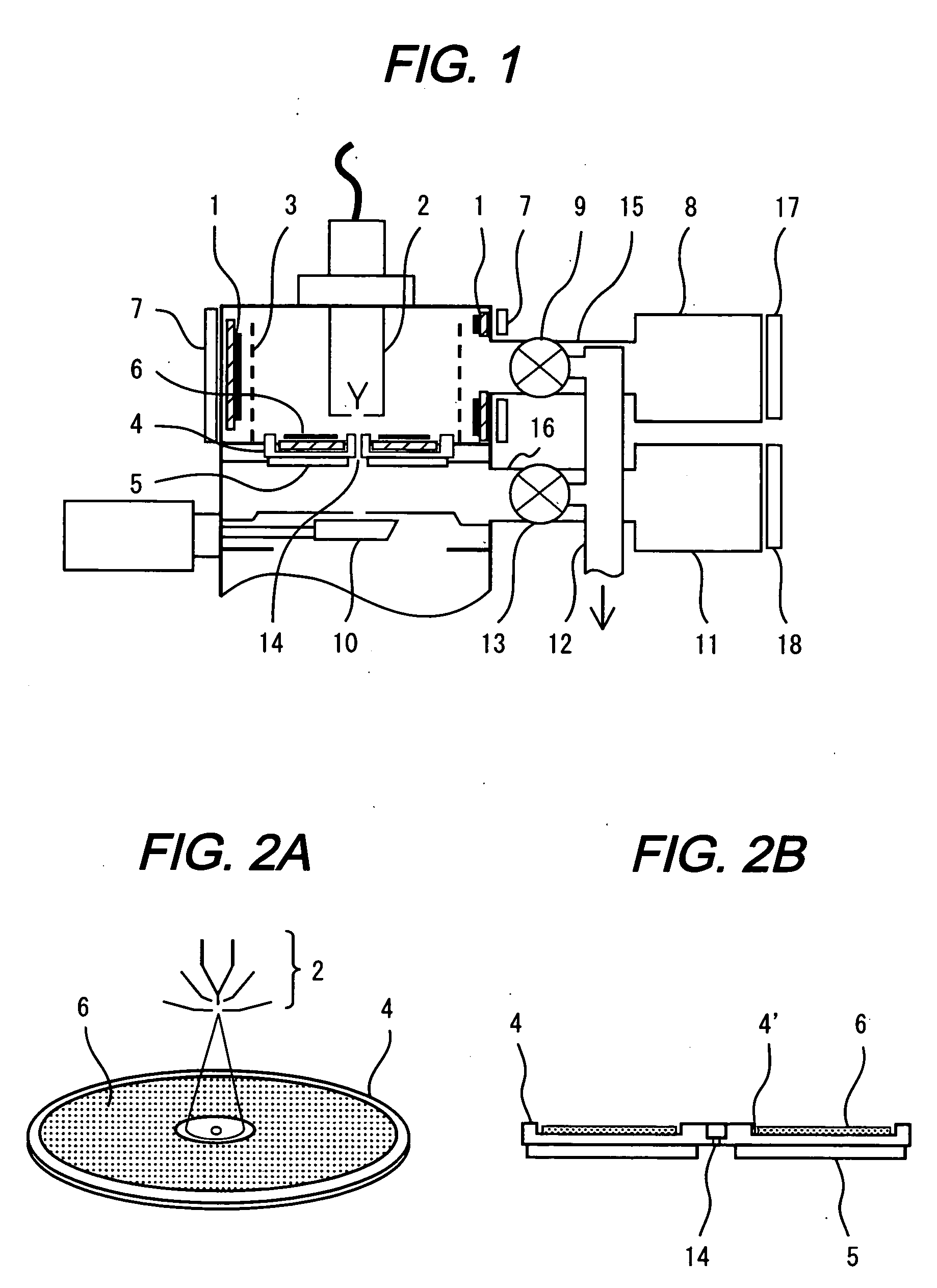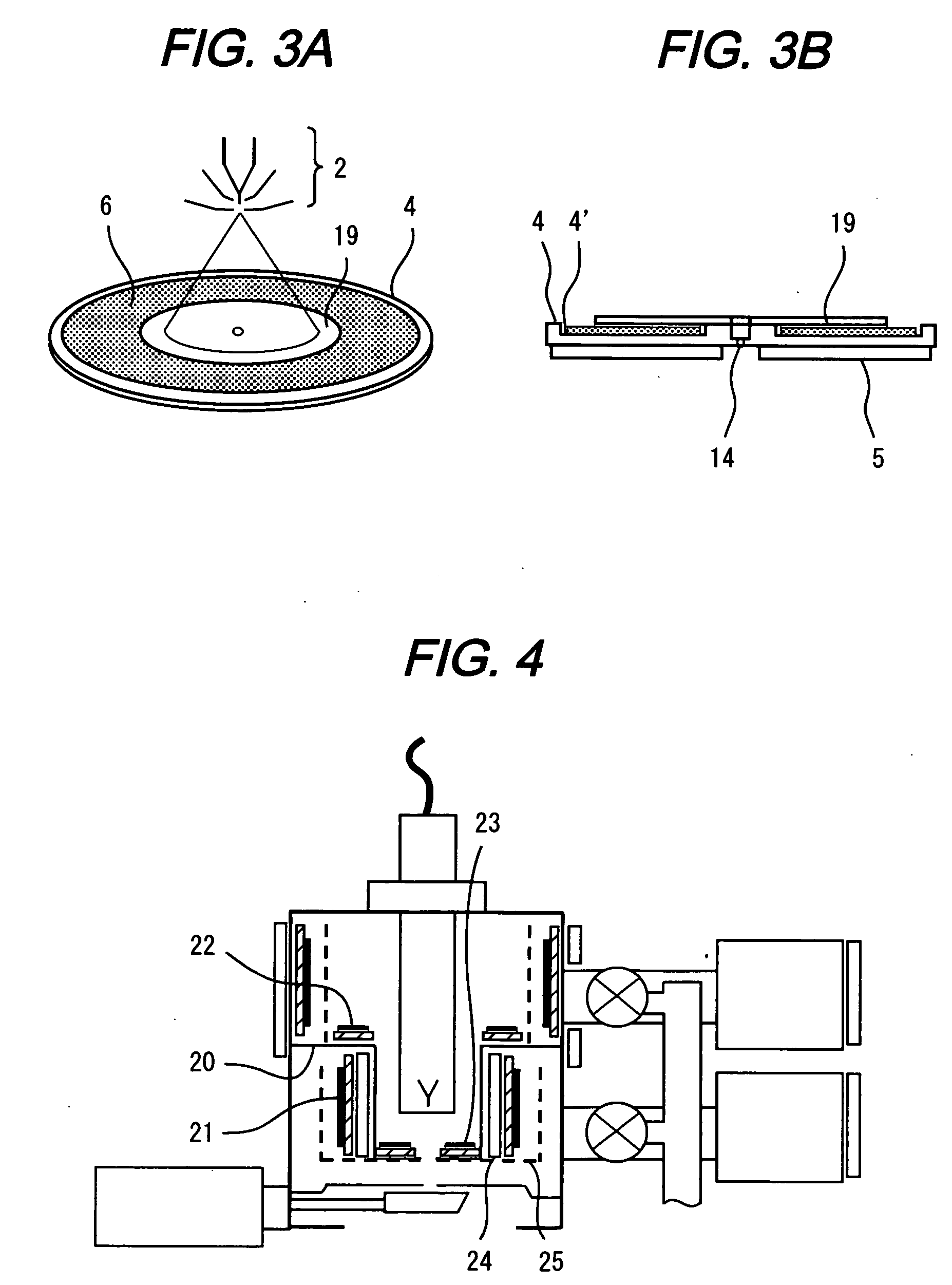Charged particle beam apparatus
a technology of chargeable particles and beams, applied in the field of chargeable particle beam apparatuses, can solve the problems of adverse effect of reducing emission current, difficult to effectively achieve evacuation in the vicinity of electron sources, and possible adverse effects of emission current reduction
- Summary
- Abstract
- Description
- Claims
- Application Information
AI Technical Summary
Benefits of technology
Problems solved by technology
Method used
Image
Examples
first embodiment
[0038]FIG. 1 shows a configuration of a charged particle beam generator according to a first embodiment using an electron gun. Hereinafter, the electron gun according to the first embodiment will be described in detail.
[0039]A vacuum chamber, which is a vacuum vessel, includes an electron source 2 to emit electrons downward. The emitted electron beam passes through an aperture 14 and enters into a sample via an electron optical system installed below the aperture 14. The inside of the electron gun has a differential pumping system from which the aperture is separated and includes vacuum pumps, respectively, to evacuate each chamber. In the first embodiment, the charged particle beam generator, that is, the electron gun means a configuration that the electron gun is positioned at a higher portion than a movable valve 10.
[0040]The vacuum chamber in which the electron source 2 is disposed is coupled with a vacuum pump 8, a valve 9, and a rough pumping port (rough pumping hole) 12 via a...
second embodiment
[0056]In a second embodiment, a case where the electron gun described in the first embodiment is applied to the scanning electron microscope will be described. FIG. 6 is a schematic configuration diagram of the scanning electron microscope (SEM). The electron gun as the charged particle beam generator shown in FIG. 1 is mounted on the top. An electron optical system 28, an objective lens 31, and a sample chamber 35 are disposed on the lower portion of the electron gun in series and are separated each other by the aperture for passing through the electron beam 36. The vacuum evacuation of the electron optical system chamber 28 includes a dedicated vacuum pump 26 similar to the electron gun. For the vacuum evacuation from the atmosphere, each chamber is connected to the rough pumping port 12 and can be opened and closed by the valve 30 for rough pumping. The rough pumping port 12 is connected to the sample chamber 35 and the vacuum evacuation of the sample chamber 35 is performed by a...
third embodiment
[0061]A configuration of a third embodiment where the charged particle beam generator having a separate configuration is applied to the scanning electron microscope apparatus will be described with reference to FIG. 7.
[0062]An electron gun according to the third embodiment has a structure including a non-evaporable getter pump 36 having a high pumping speed in addition to the vacuum pump 11 that evacuates the vacuum chamber 39 that is located lower side of the vacuum chamber 38 in which the electron source 2 exists. Theses two chambers are separated each other by the aperture.
[0063]In the scanning electron microscope, in the case of observing the images as shown in FIG. 7, since the scanning electron microscope is connected to the sample chamber having the lowest degree of vacuum by the aperture through which the electron beams passes, there is a problem. The problem is an increased possibility that the gas in the sample chamber could blow up in the vicinity of the electron source 2...
PUM
 Login to View More
Login to View More Abstract
Description
Claims
Application Information
 Login to View More
Login to View More - R&D
- Intellectual Property
- Life Sciences
- Materials
- Tech Scout
- Unparalleled Data Quality
- Higher Quality Content
- 60% Fewer Hallucinations
Browse by: Latest US Patents, China's latest patents, Technical Efficacy Thesaurus, Application Domain, Technology Topic, Popular Technical Reports.
© 2025 PatSnap. All rights reserved.Legal|Privacy policy|Modern Slavery Act Transparency Statement|Sitemap|About US| Contact US: help@patsnap.com



